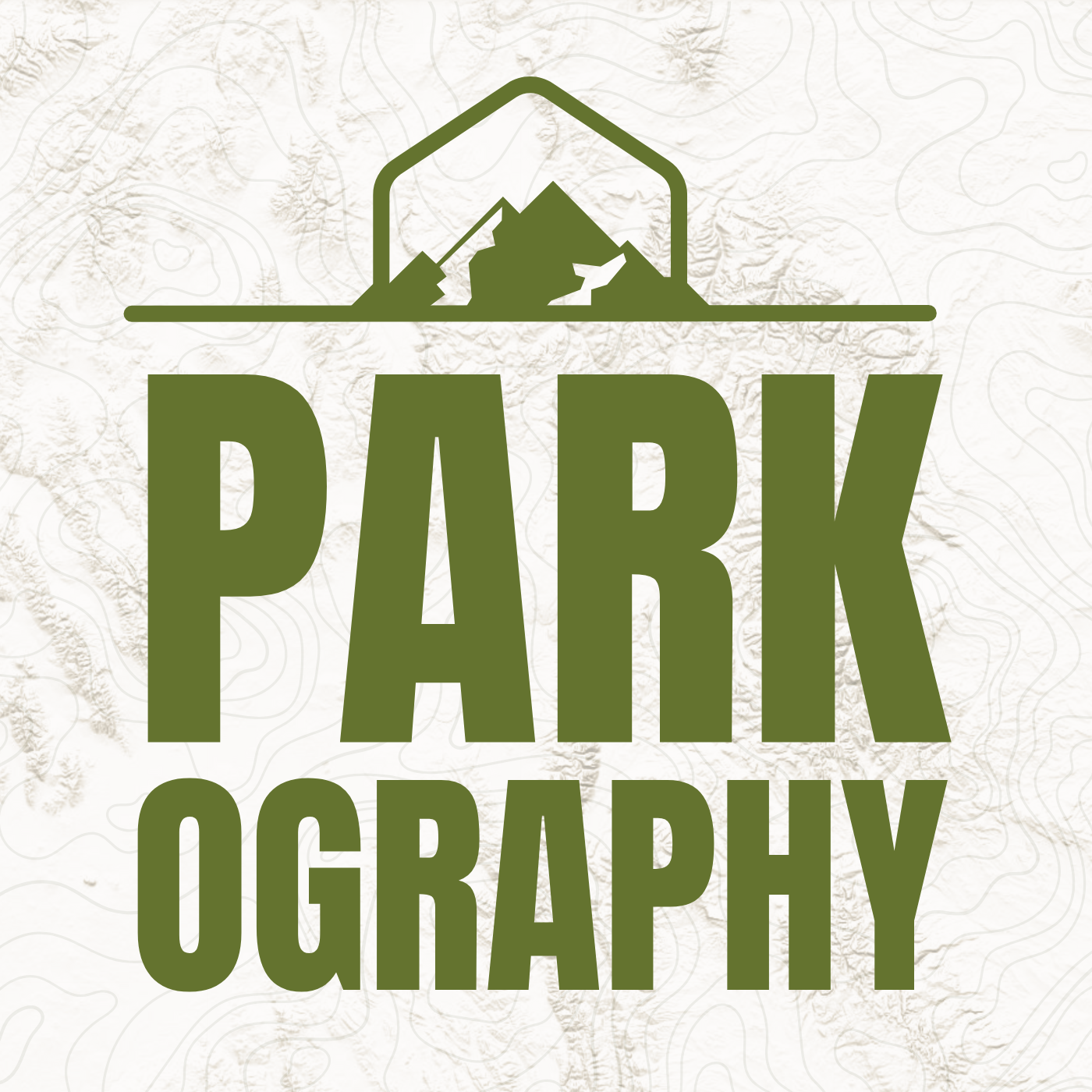Parkography

Parkography (formerly known as the America’s National Parks Podcast) is the new home for the powerful stories, rich history, and breathtaking landscapes of America’s national parks and public lands. Through immersive storytelling, vivid soundscapes, and in-depth research, we explore the people, places, and pivotal moments that shaped the wild places we cherish today. From iconic landmarks to hidden corners, Parkography brings the soul of America’s public lands to life—one story at a time.
Episodes
Episodes
Sunday Dec 20, 2020
Surviving Winter in the National Parks
Sunday Dec 20, 2020
Sunday Dec 20, 2020
This week on America’s National Parks, we journey to Gates of the Arctic, Yellowstone, and Glacier for three stories of survival from the wildlife that call them home: Arctic Ground Squirrels, Bison, and Clark’s Nutcrackers.
Should the whitebark pine be listed as a threatened species? The USFWS will consider public comments received by Feb. 1, 2021. Comments may be submitted electronically at www.regulations.gov by searching under docket number FWS–R6–ES–2019–0054 and clicking on the “comment now” button.
Sunday Dec 13, 2020
Medgar Evers
Sunday Dec 13, 2020
Sunday Dec 13, 2020
Shortly after midnight on June 12, 1963, civil rights activist Medgar Evers was assassinated in the carport of the home that he shared with his wife Myrlie and their three young children in Jackson, Mississippi. His death, the first murder of a nationally significant leader of the American Civil Rights Movement, heightened public awareness of civil rights issues and became a catalyst for the passage of the Civil Rights Act of 1964.
Today on America's National Parks, our newest National Park Service Unit, the Medgar and Myrlie Evers Home National Monument in Jackson, Mississippi.
Sunday Dec 06, 2020
Humpbacks
Sunday Dec 06, 2020
Sunday Dec 06, 2020
Mountains that tower over beaches, temperate rainforests, ice fields, tidewater glaciers, and marine depths welcome the visitors that make the trek to visit this off-the-beaten-path destination. These habitats provide homes for mountain goats, moose, shorebirds, salmon, and bears, but the easiest way to get around in this national park is not by foot. Nearly 1200 miles of shoreline curve around inlets and islands. One endangered animal has thrived in this environment, swimming here to feed for the summer before returning to tropical waters near Mexico and Hawaii every winter. This week: the humpback whales of Glacier Bay National Park and Preserve.
Monday Nov 30, 2020
Monday Nov 30, 2020
Hiking has arguably become the most popular activity in 2020, but as more and more people take to the trails, rescues are on the rise in National Parks putting a strain on resources, In Utah, a mysterious monolith appeared sparking all kinds of theories, and just as people were rushing to be some of the first to snap a photo with it, it disappeared. The National Park Service finds itself in a 270 million dollar wrongful death lawsuit after a woman lost her life in one of the most shocking ways we’ve ever heard of in a National Park. It’s time for this month’s National Park News.
Sunday Nov 22, 2020
Pipestone
Sunday Nov 22, 2020
Sunday Nov 22, 2020
The “peace pipe,” as it’s often called by those who only know it as a symbol of the hundreds of peace treaties signed between the federal government and Native American tribes, is a valued tradition that dates back thousands of years. And today, on a 1-square-mile plot of land, that tradition continues in the modern world, ever changing yet firmly rooted in the past. Today on America’s National Parks, Minnesota’s Pipestone National Monument.
Sunday Nov 15, 2020
Wild Horses
Sunday Nov 15, 2020
Sunday Nov 15, 2020
There are about 60,000 free-roaming horses in North America, and while we call them “wild,” they more accurately fit the definition of feral, which means they are free-roaming descendants of domesticated horses. Regardless, their majesty is impressive to behold anywhere you find them.
Domesticated horses were introduced into North America beginning with the Spanish conquest. Escaped horses then spread throughout the Great Plains. But it’s clear that centuries of domestication didn’t alter their instincts too much, as they quickly reverted to ancient behavioral patterns in the wild. On Assateague Island, horses have lived wild for over 300 years species, but managing the herd is critical to the continued protection of the seashore ecosystem.
Monday Nov 09, 2020
Ring, Grandfather, Ring
Monday Nov 09, 2020
Monday Nov 09, 2020
Too often we look at our symbols and see them as the enduring legacy of our past, when in reality, symbols have always been mirror for us to reflect our current moments in, in order to inform our life’s direction. In the united states, the American Flag gets a lot of play, as does the Statue of Liberty, and the bald eagle. But there’s one symbol that we all know, but doesn’t always immediately come to mind as a representation of the American experience. And that’s a shame, because it’s a better representation of America than planned and designed effigies like the flag and Lady Liberty. Today on the America’s National Parks Podcast, the Liberty Bell.
Saturday Oct 31, 2020
Saturday Oct 31, 2020
The world's longest fossilized footprint tracks have been uncovered in the White Sands of New Mexico, the National Trail system has grown by more than 1300 miles, two YouTubers are fined $1000 for filming in parks without a permit, a hiker lost in Zion for 12 days has been found, but questions abound about her disappearance, and a big change in policy will allow America’s more than 20 million veterans access to National Parks for free. It’s time for this month’s National Park News.


